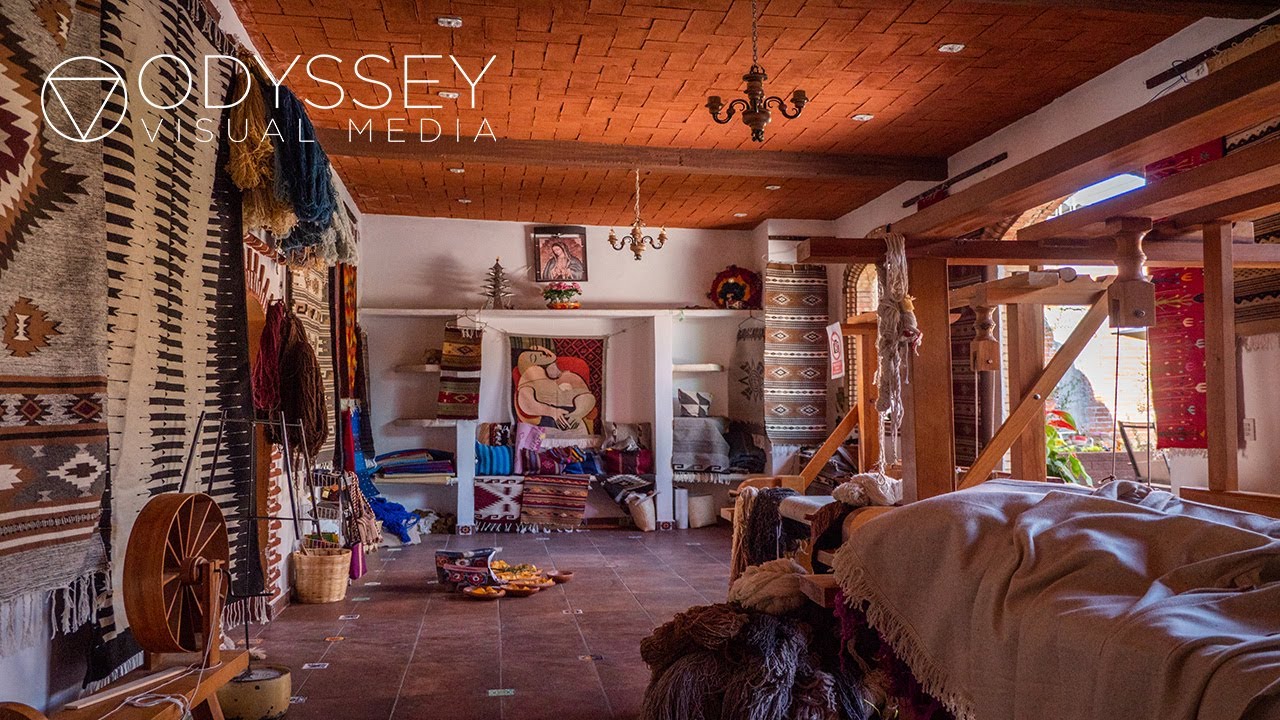Mexican fabric is an exquisite embodiment of rich cultural heritage and artistic craftsmanship. Bursting with vibrant colors, intricate patterns, and unparalleled quality, this fabric is a testament to Mexico’s deep-rooted traditions and indigenous roots. Each thread woven into this fabric tells a unique story, showcasing the ingenuity and creativity of Mexican artisans. From the moment you lay eyes on this fabric, you are captivated by its striking beauty and undeniable allure. Its authenticity is unparalleled, transporting you to the heart of Mexico with every touch and feel. Whether it’s the traditional patterns inspired by ancient civilizations or the contemporary designs that embrace modern influences, this fabric offers a diverse range of options that cater to every taste and style. The timeless appeal of Mexican fabric makes it a versatile choice for various applications, from clothing and accessories to home decor and upholstery. Embracing this fabric not only allows you to adorn yourself and your surroundings with its mesmerizing charm but also supports the livelihoods of talented Mexican artisans who have dedicated their lives to preserving this rich cultural tradition. Discover the enchantment of Mexican fabric and let it weave its magic into your life.

The Rich Heritage of Mexican Fabric
Mexican fabric is renowned worldwide for its vibrant colors, intricate designs, and rich cultural significance. Traditional Mexican textiles have a long history that dates back centuries, and they continue to play an integral role in Mexican culture today. In this article, we will explore the fascinating world of Mexican fabric and delve into its history, types, production techniques, and cultural significance.
The History of Mexican Fabric
Mexican fabric has a deep-rooted history that can be traced back to the ancient civilizations of the Mayans and Aztecs. These indigenous cultures developed advanced weaving techniques and used natural materials such as cotton and agave fibers to create textiles for various purposes, including clothing, ceremonial attire, and decorations.
After the Spanish conquest in the 16th century, the indigenous weaving traditions merged with European influences, resulting in a unique fusion of styles and techniques. Spanish settlers introduced the use of wool and silk, along with the introduction of the vertical loom, which revolutionized textile production in Mexico.
The Types of Mexican Fabric
Mexican fabric encompasses a wide range of types, each with its distinct characteristics and uses. Some of the most notable types include:
1. Oaxacan Embroidery
Oaxacan embroidery is renowned for its intricate patterns and vibrant colors. This type of fabric is created using a technique called “punto de cruz” or cross-stitch. It is commonly used to adorn blouses, dresses, and other traditional garments.
2. Huipil
The huipil is a traditional Mexican garment worn by indigenous women. It is a loose-fitting tunic-like blouse, often made from cotton or silk, and embellished with intricate embroidery or woven designs. Each region in Mexico has its unique style of huipil, making it a symbol of cultural identity.
3. Serape
Serapes are brightly colored, striped blankets that are often worn as shawls or used as decorative throws. They are typically made from wool and feature vibrant geometric patterns, reflecting the cultural heritage of the Mexican people.
4. Zapotec Rugs
Zapotec rugs, also known as “Oaxaca rugs,” are handwoven textiles made by the Zapotec people of Oaxaca. These rugs are known for their intricate designs, which often depict traditional Zapotec symbols and motifs. They are crafted using a pedal loom and natural dyes, creating unique and stunning pieces of art.
5. Tenango Embroidery
Tenango embroidery originates from the Tenango de Doria region in Hidalgo, Mexico. This type of embroidery features bold, colorful designs depicting animals, plants, and scenes from daily life. It is meticulously hand-stitched onto a base fabric, creating visually striking textiles.
Production Techniques
The production of Mexican fabric involves a combination of traditional and modern techniques. While some artisans still employ ancient methods passed down through generations, others incorporate modern tools and machinery to increase efficiency.
Hand-weaving is a prevalent technique used in producing Mexican fabric. Artisans utilize different types of looms, such as backstrap looms and pedal looms, depending on the complexity of the design. These looms allow weavers to create intricate patterns and control the tension of the threads.
Natural dyes play a significant role in Mexican fabric production, as they contribute to the vibrant colors that are characteristic of traditional textiles. Artisans use various natural materials, such as plants, insects, and minerals, to create a diverse range of hues. Some popular natural dyes include cochineal, indigo, and marigold.
The Cultural Significance
Mexican fabric holds immense cultural significance and is deeply intertwined with Mexican identity. The vibrant colors and intricate designs reflect the country’s rich history, indigenous heritage, and diverse cultural traditions.
Traditional Mexican textiles are not only used for clothing but also play a vital role in religious ceremonies and celebrations. They are often used to create garments for traditional dances, weddings, and other significant events. These textiles are also exported worldwide, contributing to Mexico’s economy and sharing its cultural heritage with the rest of the world.
In conclusion, Mexican fabric is a testament to the rich heritage and artistic traditions of the Mexican people. From the ancient weaving techniques of the Mayans and Aztecs to the vibrant colors and intricate designs of contemporary textiles, Mexican fabric continues to captivate and inspire people around the globe.
“Exploring the Vibrant Artistry of Oaxaca: Inside a Traditional Mexican Textile Workshop”
Video Source : ODYSSEY VISUAL MEDIA
Mexican Fabric
Mexican Fabric
| Fabric Type | Origin | Traditional Use | Notable Features |
|---|---|---|---|
| Sarape | Saltillo, Coahuila | Used as a blanket, poncho, or tablecloth | Brightly colored with intricate geometric patterns |
| Oaxacan Embroidery | Oaxaca, Oaxaca | Decorative element on garments and textiles | Hand-stitched with vibrant, multi-colored threads |
| Rebozo | Tlacolula, Oaxaca | Worn as a shawl or used for carrying babies | Long, rectangular shape with fringed ends and various patterns |
| Huipil | Chiapas, Yucatán, Oaxaca | Traditional blouse worn by indigenous women | Elaborately embroidered with intricate motifs and symbols |
| Zapotec Rug | Teotitlán del Valle, Oaxaca | Used as rugs or wall hangings | Handwoven with wool yarn in intricate patterns and vibrant colors |
Mexican fabric is known for its rich cultural heritage and exquisite craftsmanship. Each fabric type showcased in this table represents a distinct region and traditional use. The sarape, originating from Saltillo, Coahuila, is a versatile fabric that can be used as a blanket, poncho, or tablecloth. Its notable feature lies in its brightly colored threads woven into intricate geometric patterns.
Oaxacan embroidery, hailing from Oaxaca, Oaxaca, is a decorative element that adorns garments and textiles. This embroidery style is characterized by its hand-stitched, vibrant, and multi-colored threads, creating visually stunning designs.
The rebozo, originating from Tlacolula, Oaxaca, is a long and rectangular fabric with fringed ends. It serves multiple purposes, functioning as a shawl or a carrier for babies. Rebozos display a variety of patterns and are often produced with traditional weaving techniques.
The huipil, worn by indigenous women in Chiapas, Yucatán, and Oaxaca, is a traditional blouse that showcases elaborate embroidery. These blouses are meticulously adorned with intricate motifs and symbols, reflecting the cultural heritage and identity of the wearer.
Lastly, the Zapotec rug, crafted in Teotitlán del Valle, Oaxaca, is a highly regarded textile used as rugs or wall hangings. These rugs are handwoven with wool yarn, resulting in intricate patterns and vibrant colors, capturing the essence of Zapotec culture.
Mexican fabric exemplifies the dedication and skill of artisans who have preserved these traditional techniques for generations. It continues to captivate individuals worldwide with its artistic beauty and cultural significance.

